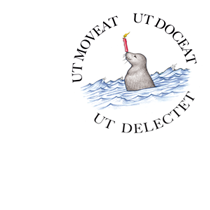For over 40 years, Meredith Bergmann has been making sculpture that deals with complex themes in an accessible, beautiful, and provocative way. Working within the tradition of narrative sculpture, she draws on her love of the history of art, literature, and mythology to make the past speak to the present. Blending the sensuality and power of representational sculpture with her own subtle sense of mischief, her work evokes multilayered responses.
She works both on public monuments and on a private scale, exploring issues of history, social justice, race, human rights, disabilities, and the power of poetry and music. Her work has been shown in more than two dozen exhibitions and appears in over a dozen institutional collections. Her public commissions include the Boston Women’s Memorial on Commonwealth Avenue in Boston’s Back Bay 2003, the Women’s Rights Pioneers Monument in New York City’s Central Park 2020, and the FDR Hope Memorial in Roosevelt Island, NY’s Southpoint Park 2021.
She has over 20 years’ experience dealing with the committees, budgets, and agencies involved in realizing public monuments, and works to make sure that each interaction improves the finished monument.
Bergmann’s articles, essays, reviews, and poems have appeared in many journals, and she has worked as Production Designer for five feature films. Her work in a variety of genres has helped her focus on the essence of public art: what will be most nourishing and challenging for visitors to see and think about? How can the work inspire change?
Meredith lives in Massachussets with her husband Michael Bergmann, a writer and director, and their son.
ARTIST’S STATEMENT
I work for social justice and historical redress through my public art. My commissions include an 8’ tall statue of Civil Rights icon and renowned opera singer Marian Anderson for a college in South Carolina, a heroic-scale portrait of the enslaved child Sally Maria Diggs (“Pinky,” in 1860) for the Brooklyn Historical Society, an allegorical female September 11th Memorial for the Cathedral of St. John the Divine, a memorial to the Harlem Renaissance poet Countee Cullen that addresses identity and race, and the FDR Hope Memorial for Roosevelt Island in a setting designed for use by people of all abilities.
I immerse myself in the world of my subjects, their histories, their individual sense of mission, and imagine what that all can mean to us and to the future. This has made me a powerful advocate for these projects in fundraising, gaining approvals, and being able to redesign elements as needed without losing the coherence of the original design. I’ve been able to retain and deepen my enthusiasm for my subjects even when a project stretches over years.
It gives me great satisfaction knowing that my sculptures make a difference in people’s lives. Bostonians leave notes on the Boston Women’s Memorial and put sweaters on Phillis Wheatley when it gets cold. One of my son’s teachers found out that I had made the Memorial to Countee Cullen, installed in the Countee Cullen Branch of the NY Public Library, and exclaimed, “You made this? I saw this on a school trip when I was twelve– I realized for the first time that race is a social construct.” This young woman went on to study social neuroscience.

